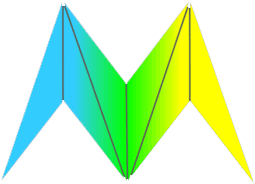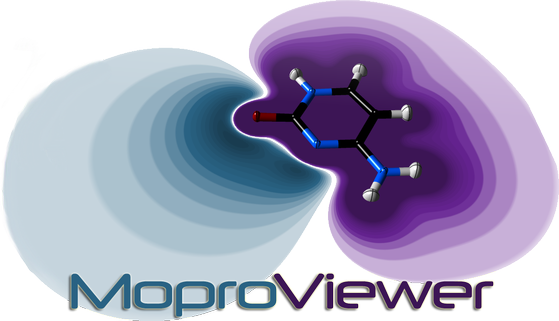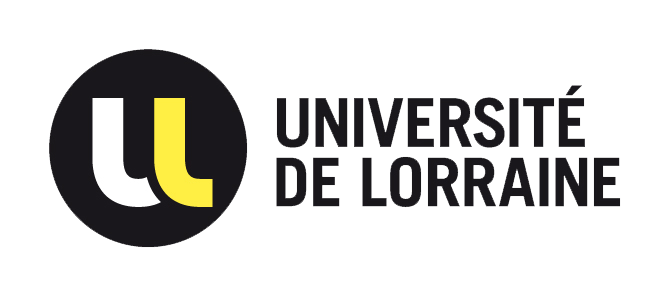
Read more…
Authors : Christian Jelsch, Benoit Guillot, Niels Hansen, Claude Lecomte, Virginie Pichon-Pesme
MoPro is a software package dedicated to the charge density modeling of crystal structures.
The MoProSuite software has the following most important features:
- Multipolar (Hansen & Copppens) and spherical (IAM) models of atomic electron density to refine X-ray structures and charge distribution.
- Lest squares refinement with full matrix inversion or preconditionned conjugate gradients
- Isotropic, anisotropic and anharmonic modeling of atomic thermal motion
- Simple and powerful script language
- Restraints/Constraints on stereochemistry, thermal motion and charge density parameters
- Automated generation of local axes systems
- Automated generation of charge density symmetry and chemical equivalence constraints/restraints
- Automated geometrical constraints/restraints
- Electroneutrality constrain
- For protein crystals, correction of disordered solvent scattering by exponential scaling model or bulk methods
- Analysis tools (stereochemistry, charge density, hydrogen bonding, thermal motion)
- Crystal, molecular or fragments Electrostatic Potential computation
- Total, deformation, valence or multipolar (dipolar, quadripolar ..) electron density computation
- Topological analysis of electron density/ electrostatic potential/Laplacian: critical points, bond ellipticity, Laplacian, energy density Gcp, Vcp.
- Atomic basins and charge integration
- Electric field gradient
- Electrostatic interaction energy computation
- Refinement of Neutron and Electron diffraction crystal structure
- Several file format import/export for molecular structure definition (PDB, Shelxl, CIF…)
- Output Properties displayed in 2D plane, or given sampled on 3D grid (XPLOR or GAUSSIAN CUBE file formats)
- Computation of Hirshfeld surface and contact enrichment ratios
- Modeling of electron density by charged spherical real+virtual atoms
- Estimation of errors on charge density derived properties using the sample standard deviation method.

Read more…
Author : Benoit Guillot
MoProViewer is a molecular viewer dedicated to the charge density analysis field, linked to the MoPro refinement program suite and especially to the VMoPro program, which computes electron density derived properties. MoProViewer can be considered as a graphical interface to VMoPro as it allows to graphically configure a computation and to display the results. MoProViewer can display 3D isosurfaces, 2D isocontours maps, critical points and bond paths, electrostatic moments, gradient lines fields and topological basins.

Read more…
Author : Massimo NESPOLO
Publication :
M. Nespolo, C. Iordache (2013). « Twiny: from morphology to twin element and vice versa » – Journal of Applied Crystallography 46 (2013) 801-803. Electronic reprint (354 Kb) (DOI)
Electronic reprint (354 Kb) (DOI)
Twiny is a small Fortran software for identification or confirmation of the twin element from the morphological analysis of twins. It takes as input the twin element and computes the angle between corresponding [uvw] directions in two individuals of the twin: the result is used by the investigator to confirm or invalidate the supposed twin element.
Windows file : Twiny-win.zip (6 Mb)
Linux files : 32bits / 64bits (6 Mb)
Mac file : Twiny-mac.zip (25 Mb)

Read more…
Author : Massimo NESPOLO
Publications :
- M. Nespolo (2016). Charge Distribution as a tool to investigate structural details. IV. A new route to heteroligand polyhedra. Acta Crystallogr., section B, in press.
- M. Nespolo, B. Guillot (2015). CHARDI2015: Charge Distribution analysis of non-molecular structures. J. Appl. Crystallogr., submitted
The Charge Distribution method (CD or CHARDI), introduced by Hoppe et al. (1989), is the most recent development of the classical theory of the bond strength (Pauling, 1929) and differs from the Bond Valence (BV) approach (e.g. Brown, 1978) in exploiting the true bond distances in a self-consistent computation, instead of employing empirical curves requiring empirical parameters. It applies to structures that can be described in the framework of a Madelung approach, i.e. where the atoms are described as dimensionless point charges forming coordination polyhedra. The atoms at the centre of the polyhedra are indicated as PC-atoms, those at the corners (vertices) of the polyhedra as V-atoms. Electropositive („cations“) and electronegative („anions“) are alternatively assigned the role of PC-atoms and V-atoms and both descriptions are used to analyse the structure.
Windows file : Chardi2015.zip (9 Mb)
Read more…
Author : Massimo NESPOLO
Publications :
M. Nespolo, G. Ferraris (2006). The derivation of twin laws in non-merohedric twins – Application to the analysis of hybrid twins. Acta Crystallogr. A62, 336-349. Electronic reprint (330 Kb)
Electronic reprint (330 Kb)
Windows file : Install_geminography.zip (6 Mb)





